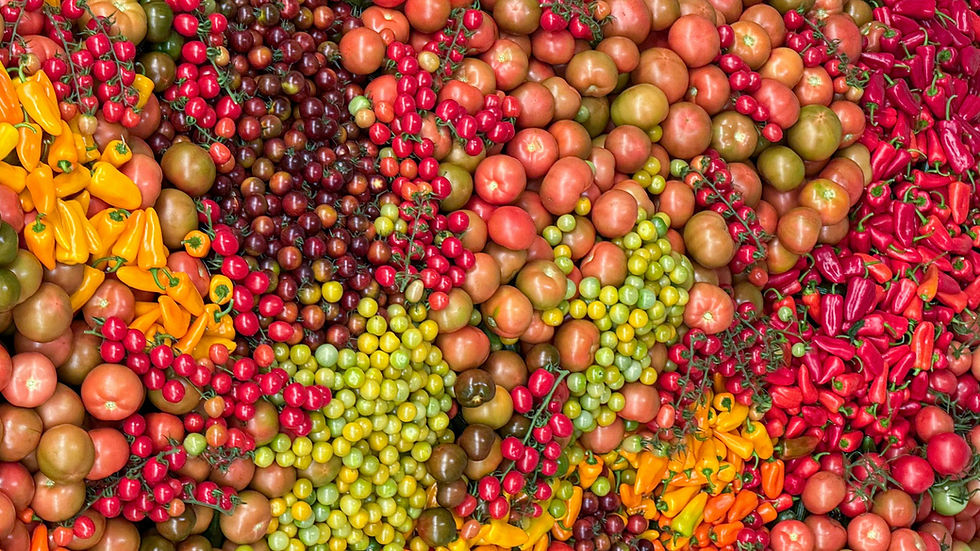It’s tomato season!
- Sustainable Agriculture Network

- Aug 12
- 3 min read
Updated: Oct 29
Whether you shop at a chain store or wait anxiously for the opening of your local farmers market, you know that July usually brings juicier, tastier tomatoes than usual. Tomatoes are the quintessential summer produce, in season across the entire country from July to September. However, if you live in the south, you most likely enjoy a few more months of tomatoes at their prime.

Hey, we are not judging if you consume tomatoes year-round! Tomatoes have become one of the staple products underlying so many of our diets. The United States consistently ranks among the top consumers of tomatoes in the world, with an estimate of 13 million annual tons in 2024. A 2016 study by Reimers and Keast positioned the tomato as the second most consumed vegetable in the U.S., after the potato, making up for 19% of a person’s average vegetable consumption.
A lot of this, of course, happens in the form of tomato products, such as sauce, ketchups, and juice. Americans’ taste for this fruit-turned-veggie has been willingly reinforced by public policy attempting to increase consumption of vegetables. Most infamously, during the Reagan administration, ketchup was classified as such, so that could be counted towards daily consumption numbers.

That is to say: tomatoes are hard to avoid. Even if you like eating seasonally, the odds are that you will keep eating them all year round, as they are very convenient, and our palate has become greatly fond of them.
How did we get here? Tomatoes' long journey to our tables
Originally grown in the Andes and Mesoamerica, the tomato—thus named after the Nahuatl word tomatl, returned to the Old World with the first Spanish conquerors and was met with distrust. Its odd mixture of tart and sweet (what today we understand as the more complex umami), along with the fear of it being poisonous, as many newly discovered plants often were, kept interest away from this fruit.
First cultivated mainly as a botanical curiosity to show off to friends and interrogated as to possible medicinal qualities, it took over 100 years for it to start appearing regularly on recipes. It was consumed mostly as a condiment and when eaten whole, often boiled extensively to reduce any remaining doubt as to its perils.

As with many foodstuffs originally grown in the New World, colonists preferred to stick to the tried and true, and tomatoes didn’t make into the diet until they had been accepted by the Europeans and travelled back to their land of origin.
Tomatoes gradually gained popularity, and by the 19th century, they were celebrated as both healthy and delicious additions to the diet. By the early 20th century, they had become a staple of American “victory gardens”: as citizens were encouraged to cultivate their own food in support of the war effort, tomatoes proved they had earned a permanent place on the American table.

Today, tomatoes are available year-round, grown both in greenhouses and imported from warmer places. However, the distinct sweetness of a tomato naturally harvested in the season in which it was originally intended to be is always a treat to wait for.
So, this weekend, head out to your farmers market and remember that the humble tomato travelled a long way to get to your table. Enjoy!
Did you know that… one of the first names the tomato had in the English-speaking world was 'love apple`?




Comments